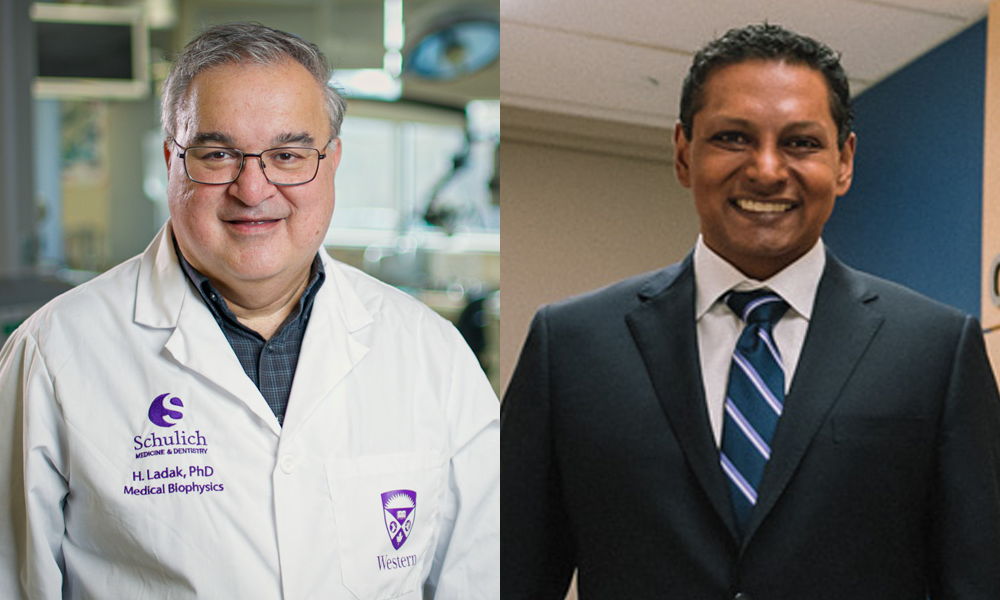Media
Contact
Communications Specialist
Faculty of Engineering
Spencer Engineering Building
Room 2072
Western University
Tel: 519-661-2111 ext. 87015
Email: engineeringcomms@uwo.ca
Western researchers receive “Best Paper Prize” from Journal of Anatomy

Hanif Ladak of the department of electrical and computer engineering and the department of medical biophysics, and Dr. Sumit Agrawal of Western’s department of otolaryngology – head & neck surgery. (Western Communications/London Health Sciences Foundation)
Hanif Ladak, a professor jointly appointed to the department of electrical and computer engineering and the department of medical biophysics, and Dr. Sumit Agrawal of Western’s department of otolaryngology – head & neck surgery, are part of an international research group that has received the 2024 Journal of Anatomy Best Paper Prize.
The paper, “Microanatomy of the human tunnel of Corti structures and cochlear partition-tonotopic variations and transcellular signaling”, was co-authored with researchers from partner institutions in Sweden and Austria.
Dr. Agrawal and Ladak are the inaugural endowed research chairs to pursue innovative hearing technology research and are the first researchers from a Canadian university to receive the Best Paper Prize from the Journal of Anatomy.
“Our collaborative research shows how engineering and medical science together can unlock new insights into the cochlea—insights that could reshape how we design cochlear implants,” says Ladak, who is also a faculty member in the School of Biomedical Engineering at Western.
In their paper, Ladak and his team share new details about how the human ear transforms sound waves into the signals our brain interprets as hearing. Using exceptionally well-preserved human ear tissue obtained during surgery, they were able to examine the inner ear's delicate structures with unprecedented clarity.
They found that the cochlea - the snail-shaped organ responsible for hearing - has dramatically different architecture at different locations, each specifically designed to process different sound frequencies.
The team also discovered a previously unknown structure they called an "accessory basilar membrane" that appears to help fine-tune the ear's sensitivity to various pitches.
The findings could have significant implications for treating hearing loss and improving cochlear implants, the electronic devices that help deaf people hear.

